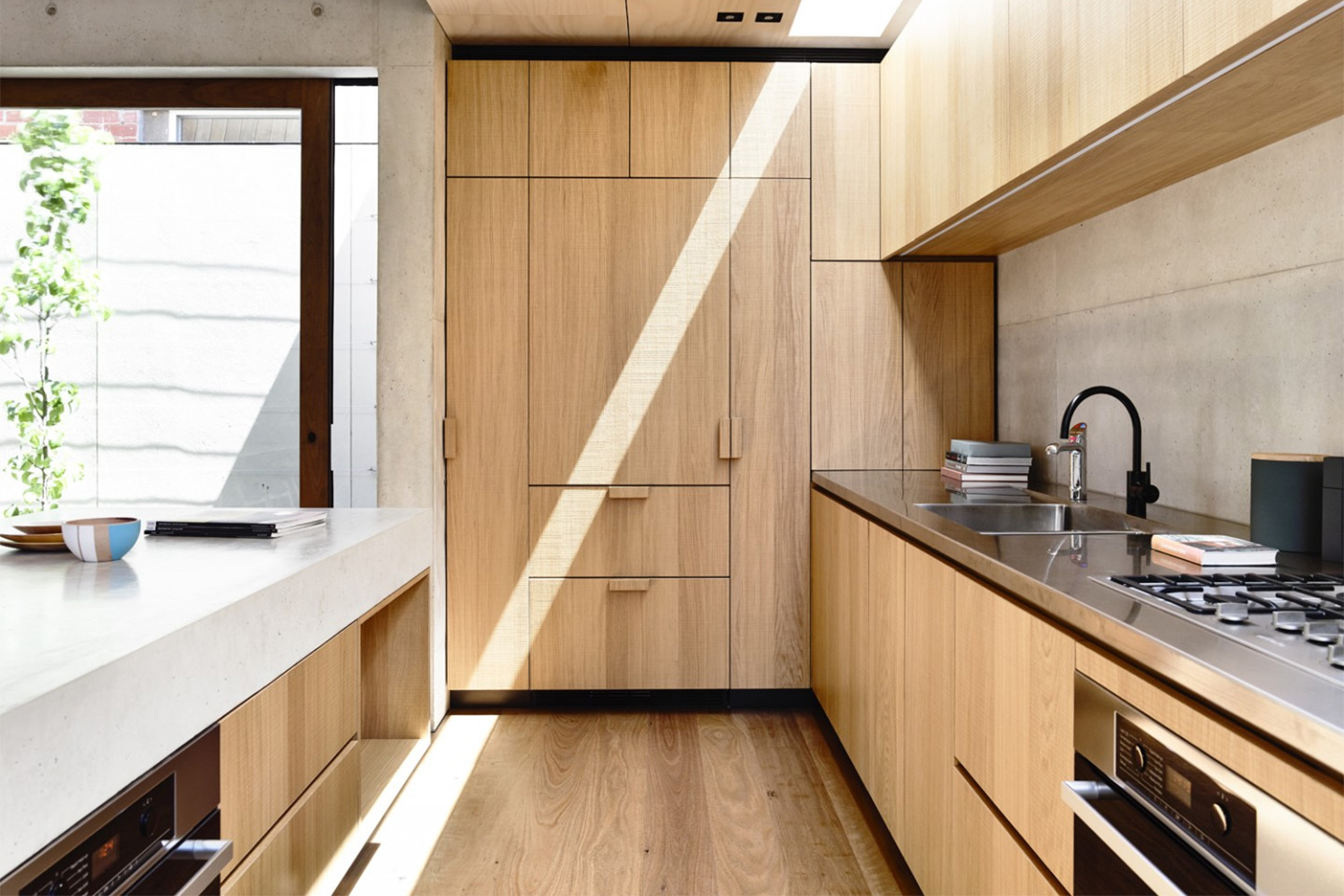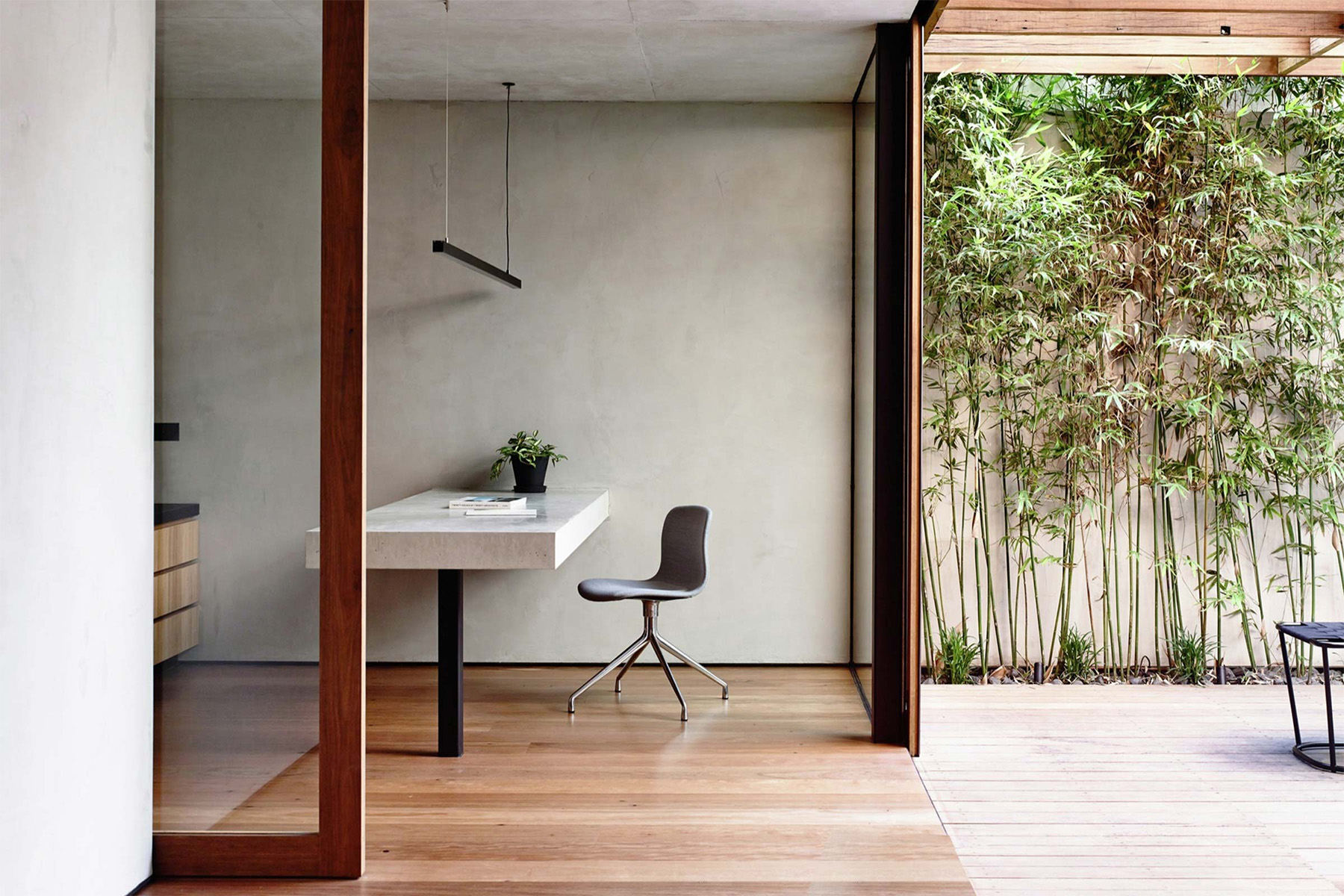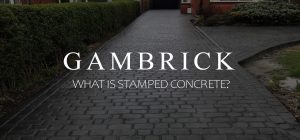
Are Concrete Walls Cheaper Than Wood?
Almost all homes built in the Unites States today have a wood frame with a concrete foundation. Wood is the standard because it’s strong, durable, easy to build with and has always been affordable. However that’s changing fast, lumber prices have skyrocketed after the Coronavirus Pandemic and concrete prices have remained relatively stable. Around the world concrete is actually the more popular building material. It’s super strong, more durable than wood, fire resistant, pest proof and cheap. Maybe the rest of the world has been doing something right all these centuries. Considering the current price of lumber, concrete walls are cheaper to build than wood. However, simply looking at the cost to build the wall doesn’t tell the whole story.
Insulation, electrical, plumbing, HVAC, wall finishes, the foundation and roofing all play important roles in building a Modern home too. Switching from wood walls to concrete effects a lot of other things in the house which will effect their pricing.
Then there’s insurance to consider. Wood is a flammable material but concrete is not. Because of this, it’s usually cheaper to insure a concrete house vs a wood frame. If you plan on living in the home for the next 10-20 years that can add up to a serious savings.
Long terms expenses are a factor too. Concrete doesn’t deteriorate, get eaten by bugs, or rot like wood does. Water doesn’t effect it in the same way as wood so it’s much better in a flood. And concrete walls are totally air proof so super insulating a home is much easier. Almost all of the Passive Houses I’ve built had concrete walls because it’s so easy to build a near air tight home. This can save big money over the long haul.
Is It Cheaper To Build With Concrete Or Wood?
Home construction is always a hotly debated topic. Especially now that home prices are soaring again. Many homeowners are choosing to build a home rather than buy a used on at these crazy prices. Because of the high lumber prices, many homeowners and architects are giving concrete walls a look. Some builders suggest that the benefits of wood walls outweigh the benefits of concrete. While others say just the opposite. Around the world it’s clear that builders prefer concrete. So why do we use so much wood here in the United States?
In the past, most homes built in the U.S. were made from masonry. Homes weren’t solid concrete but used a lot of cinder block, brick, stone and cement. Even homes built with a wood frame used lots of masonry products around them. But to cut costs and lower built times, wood was used and masonry was removed or greatly reduced. In most Modern homes, there’s very little masonry outside the foundation and decorative elements.
However, now that lumber prices are so high and concrete prices have remained relatively stable, concrete walls are a viable option again. The price to build a concrete wall vs a wood walls is actually less for the first time in a very long time.
When comparing material costs, concrete walls are cheaper than brick and wood, brick is the most expensive option, and wood falls somewhere in the middle.
But there are other things to consider than just the upfront build cost of the walls.

Concrete Vs Wood Upfront Construction Costs
When you compare the cost to build with concrete walls vs. wood, you should look at more than just upfront construction costs. Long terms costs like insurance, durability and strength are also important. And so are mechanical costs like HVAC, electrical and plumbing along with finishes.
When comparing strictly the upfront construction cost to build the wall, at the correct material costs in 2022, concrete is about 20% cheaper. Let’s look at an example.
I pay around $18 per sq.ft. for an 8 inch thick poured concrete wall. This includes materials, labor and the forms. For a 20′ x 10′ tall wall that’s 200 sq.ft. or $3,600 total.
At the current lumber prices in 2022, that same wall framed with 2×6 lumber 16″ o.c. costs around $3000 just for framing wood, tie downs and sheathing. Then you have to add labor. Depending on your labor costs, the wood wall is usually more expensive, weaker, less energy efficient and less durable.
But there are other up front construction costs to consider.
Insulation
Whether you build a concrete or a wood wall, you have to consider insulation. Wood walls are typically insulated using batts placed in between the studs. The batts are usually equal to the size of the stud thickness. The thicker the stud the more R-value you can pack into the wall. This method provides good insulation but has lots of thermal bridges and cracks where air can pass. It’s not an air tight system.
Concrete walls are insulated differently. Large foam panels are placed up against the concrete wall to provide R-value. Concrete doesn’t have gaps or cracks so there is no air penetration. This is an air tight way to insulate without any thermal bridges.
In general, insulating concrete walls are more expensive than wood because you can’t use batts.
Then there’s the material to consider. Wood doesn’t provide much energy efficiency, but concrete does. It helps keep a home warm in Winter and cool is Summer because of how it stores and releases heat.
If you want lower energy bill, concrete is usually a better option more cost effective option. Especially if you build to Passive House Standards.
When considering the long term savings of insulation, concrete walls are cheaper than wood.
Mechanical Systems
If you’re consider what’s cheaper, concrete or wood walls, you have to also consider the cost of other things included in the build. With wood walls, electrical, plumbing and HVAC ducts are run inside the walls. This isn’t the case when building with solid concrete. You’ll have to come up with a plan to run the mechanical systems. This could mean running ducts inside interior wood walls, using conduits, exposed duct work, soffits or exposed piping.
I can’t go over how to run all the mechanical systems in a house because every home is different. But I have to make a note of the issue. When you switch to concrete walls, you need a plan for running all these systems throughout the house. Because working with solid concrete is very different than wood.
I’ve built many homes out of concrete and wood. And in my experience, running the mechanical systems in a concrete house was slightly more expensive than wood. But in all cases I used different techniques to hide all the ducts, pipes and wires. If you’re looking for more of an industrial look with some exposed ducts or pipes, the price would be much cheaper.
Finishes
In my experience, concrete walls are cheaper than wood in terms of finishes. Concrete is a finished look but wood is not. This means you can save money overall on the finished wall.
Concrete can be painted if you don’t like the look of natural, raw concrete. This is an inexpensive and fairly easy project that can usually be done DIY.
On the exterior, wood walls need waterproofing, siding and trim. Concrete is a more finished product so it usually requires less finish work. In some cases the exterior concrete is left exposed.
On the interior, wood walls need drywall, wood trim and paint. Again, concrete is a finished material and can be left unfinished with no paint, drywall or trim.
I should note that exterior concrete walls need to be waterproofed and insulated. I generally seal and insulate on the outside of the walls so I can leave the inside bare. It’s a great look and saves a lot of money because concrete is a high end finish all on its own.

Concrete vs Wood Insurance
In general, insurance during construction, risk insurance, and once complete, occupancy insurance, is lower for concrete than wood framing. Wood framing vs concrete walls is more expensive to insure because it’s a combustible material. Wood walls burn but concrete walls don’t. This can save a lot of money, and possibly lives, if a house catches fire.
In many homes, especially commercial multi families, we build a solid masonry fire wall between homes. This hinders the spread of the fire across a building. If all the walls are solid concrete you’ve essentially got fire walls all over the home.
The insurance savings are pretty big. When building the home, risk insurance can be 40% lower for concrete walls vs. wood. And it can be that same 40% lower during occupancy. Considering how high home insurance is you could potentially save over a thousand dollars a year by building with concrete.
Strength
Concrete walls are cheaper than wood if you compare their strength. Most solid concrete walls are at least 8 – 12 inches thick. To achieve the same level of strength out of a wood wall may be impossible. But it would definitely take more than the standard 2×6 16″ o.c. wood frame. Concrete is a huge upgrade when compared to wood framing in terms of strength.
One of the main qualities of concrete walls is their durability and high strength. Concrete is hard like a rock when dry, yet flexible enough to be molded into any shape when wet. When poured into molds and allowed to dry, a concrete wall is extremely strong and dense. Able to support huge loads and resist impacts and fire.
Solid concrete walls can withstand high winds over 200 miles an hour. And they have larger foundations to support all that weight which makes them safer in a hurricane.
When looking at the cost of building concrete walls vs wood walls in terms of strength, you get much more for the money using concrete.
Durability
Wood walls have higher maintenance and repair costs. Wood can deteriorate or rot. But concrete can’t. In general,concrete walls last 2-3 times longer than wood. And in some cases up to 10x as long. In terms of long term value, there’s no comparison.
A concrete home can last for generations before needing repairs, while a wood home typically last 40-50 years before needing significant repairs.
Termites and other bugs and small animals love wood construction. It’s easy for the to burrow in and make a home. But there’s no way for them to get through a solid concrete wall. If you consider the added cost of pest control, concrete walls are cheaper than wood.
As an organic material, wood also attracts microorganisms like mold and mildew. This has an adverse impact on the indoor air quality. Concrete, on the other hand, is both termite and mold resistant. This adds up to even more long terms savings.
Wooden structures are not resistant to water damage. Builders do a lot to keep a wood frame dry like adding vapor barriers and siding. Concrete is naturally resistant to moisture so you don’t have to do as much to keep it dry. A simple coat of sealant is sometimes enough.
Overall, concrete’s durability results in a lower cost of maintenance over time.

Wood Vs Concrete House Remodeling
If you’re considering building a concrete or a wood frame house, you should thick a little bit about the future too. Remodeling costs for a wood frame house are much cheaper than concrete. Wood walls are easy to take down, alter or put up. When you remove the drywall all the ducts, plumbing and electrical systems are easy to access and change. If you’re an experienced builder, altering a wood frame is really easy, there’s almost nothing you can’t do because all the framing and mechanical systems are so accessible.
You also have a lot more options in terms of finishes and materials when working with wood. Most homes have a wood frame so manufacturers make lots of products for them. Concrete homes are very different.
In terms of remodeling, concrete is more expensive to work with than wood. It requires a lot of heavy and expensive demolition work. It’s not as easy to remove a solid concrete wall vs a wood frame you can take down a stud at a time.
Altering plumbing, electrical and ducts is usually harder and more expensive too unless your lines and ducts are all exposed. If the lines are hidden inside a solid concrete wall there’s no easy way to get to them.
Concrete homes generally require stronger footings and foundation because they’re heavier. This means moving a wall or adding on can be more expensive because you have to alter a bigger foundation.
A simple ob like adding a window to a wood wall is very easy and fairly cheap to do. But cutting a hole for a new window in solid concrete that contains steel rebar isn’t easy or cheap. And then you have to dispose of that huge chunk of concrete.
It’s definitely cheaper and easy to remodel a wood home vs a solid concrete one.
ICF Vs Wood Frame Costs
ICF stands for Insulated Concrete Forms. They’re just like traditional poured concrete walls except the forms are built out of rigid foam insulation instead of wood or steel. ICF walls still require steel rebar reinforcement and the concrete is the same mix. The major difference is that the forms stay on when you use ICF while traditional forms are removed.
This can be a big advantage if you’re building a concrete homes that’s well insulated. I’ve used ICF a few times when building Passive Homes and love the process. They’re easy to work with and once complete, I don;t have to worry about insulating the concrete.
The downside is that both sides of the concrete wall are insulated. In many cases I only insulated the outside of the wall because I like a concrete finish. This isn’t an option with ICF.
In terms of ICF vs Wood Frame Costs, at the moment in 2022, ICF is slightly cheaper. The price of lumber is crazy and rising almost every week but ICF and concrete have remained relatively stable in comparison.
When you consider other benefits like energy savings and lower insurance, not to mention a better built home, ICF is usually the better and cheaper option. But there are drawbacks.
Wood is faster to build with and more versatile. It’s easy to make changes or remodel a wood house. But that’s not the case with ICF. The system is usually tailor made to build a specific home so you don’t want to be making lots of changes.
Remodeling an ICF house is more expensive than wood because inside those forms is a solid concrete wall with rebar. You can’t simply remove some drywall and start taking down studs. Altering concrete is a large undertaking, especially if it’s structural.
I prefer using a hybrid approach. ICF exterior walls with wood or metal interior wall studs along with engineered lumber has always worked great for me.

Wood Home Construction
The most popular way to build a house in the United States is using wood. Wood is light, strong, fast, durable and easy to work with. My framing crew can build even a 30,000 sq.ft. custom home in around a month. There’s no way to build a custom home that fast using concrete or any other material. Once the foundation is complete, the wood frame goes up fast.
Because so many homes are built out of wood, hundreds of materials are on the market to go along with a wood frame. This includes finish materials like drywall, trim and siding but also structural materials like Simpson hangers and tie downs. You have a lot of options when building with wood.
But, like any building material, wood has some pros and cons.
Pros Of Wood Construction
Here are a few advantages to building with wood.
Speed
If you want to build a home fast then frame it with wood. An entire home, even really large custom ones, can be built in under a month. A standard size 3,000 sq.ft. home can be framed and sheathed with windows installed in around 2-3 weeks. There’s no way to match that speed using concrete.
If you really want to go fast then buy a modular. The home’s are built in a factory out of wood and assembled on site in a matter of days. Modular homes are all wood framed.
Price
Wood walls has always been cheaper than concrete until recently. But that can change again based on what happens with lumber and concrete prices. It’s important to note that raw materials fluctuate in price so you have to check current pricing at the time you build.
Easy To Work With
It’s much easier to remodel a house that’s framed with wood vs concrete. You can move or remove entire walls without much trouble, but that’s not the case with concrete walls. They’re much harder to work with when compared to wood.
Cons Of Wood Construction
Although wood is a great building material, it’s not perfect.
Pests
Bugs, animals and especially termites love wood construction. This is not a problem with concrete.
Moisture
Even though wood framed homes are wrapped in a moisture resistant material like Tyvek, moisture can still find its way in. Almost nothing is more damaging to a wood home than moisture. Rot, mold, mildew and deterioration can occur. This is another issue you won;t have to worry about using concrete.
Concrete Home Construction
Concrete has been the building material of choice all over the world for centuries.
In terms of strength and durability, there’s almost nothing stronger than solid concrete. It’s a super strong, durable, long lasting material. But it’s harder to build with, takes more time, offers less flexibility and has always been more expensive. But that’s changing.
Here are some of the pros and cons of building with concrete.
Pros Of Concrete Construction
Here are a few advantages to choosing concrete.
Moisture resistance
Concrete walls don’t deteriorate or rot like wood does. You can submerge a concrete wall entirely in water for long periods of time and see no damage. This can be a benefit if you’re in a flood prone area.
Energy Efficient
If you build them the right way, concrete walls can be much more energy efficient than wood. The material soaks up and releases heat over time which can help heat and cool a home’s interior.
Healthy Air
Because concrete homes contain less organic materials, they’re much less likely to grow mold or mildew. And if you build the home super insulated and sealed, like Passive House, there’s less active heating and cooling. This means less chance contaminants will be spread throughout the home through the ducts.
Cons Of Concrete Construction
As much of a fan I am of concrete homes, they still have some disadvantages.
Flexibility
It’s harder to build and remodel concrete walls vs wood.
Built Time
Concrete homes are more labor intensive to build than wood homes. This generally makes the process slower.
Are Concrete Houses Better Than Wood
In general, wooden homes are not as safe as concrete. Wood is vulnerable to threats like fire, wind, insects, moisture, and mold. All of which can result in structural damage and safety risks. Concrete is strong, durable and resistant to most of the risks wood walls are vulnerable too. And at the moment, it’s cheaper to build with.
At the current material costs of both lumber and concrete, when you consider both the upfront construction costs and long term expense of both concrete and wood homes, concrete is cheaper. And you get a stronger, more durable and resilient product.
There are numerous benefits to using concrete vs wood. One of the most notable benefits is lower insurance costs and better energy efficiency. Concrete is non-combustible which dramatically reduces issues related to fire hazards. It also reduces thermal bridges and deals with internal temperatures better. Concrete homes generally stay Warmer in winter and cooler in Summer. This creates a more steady and even internal temperature.
Other benefits include less mold growth, better pest and insect control and a more durable home against wind and impact damage.
Concrete walls result in a safer, far more durable home that’s cheaper to insure and upkeep vs wood framing at the current material prices.
Summary: Are Concrete Walls Cheaper Than Wood?
Almost all homes built in the Unites States today have a wood frame with a concrete foundation. Wood is the standard because it’s strong, durable, easy to build with and has always been affordable. However that’s changing fast, lumber prices have skyrocketed after the Coronavirus Pandemic and concrete prices have remained relatively stable. Around the world concrete is actually the more popular building material. It’s super strong, more durable than wood, fire resistant, pest proof and cheap. Maybe the rest of the world has been doing something right all these centuries. Considering the current price of lumber, concrete walls are cheaper to build than wood. However, simply looking at the cost to build the wall doesn’t tell the whole story.
Insulation, electrical, plumbing, HVAC, wall finishes, the foundation and roofing all play important roles in building a Modern home too. Switching from wood walls to concrete effects a lot of other things in the house which will effect their pricing.
Then there’s insurance to consider. Wood is a flammable material but concrete is not. Because of this, it’s usually cheaper to insure a concrete house vs a wood frame. If you plan on living in the home for the next 10-20 years that can add up to a serious savings.
Long terms expenses are a factor too. Concrete doesn’t deteriorate, get eaten by bugs, or rot like wood does. Water doesn’t effect it in the same way as wood so it’s much better in a flood. And concrete walls are totally air proof so super insulating a home is much easier. Almost all of the Passive Houses I’ve built had concrete walls because it’s so easy to build a near air tight home. This can save big money over the long haul.
If you have any questions or comments about concrete, email any time.

John Mazzuca | About | More Posts |
Custom Home Builder
John Mazzuca is a custom home designer and builder at Gambrick with over 25 years experience in the construction industry. John has designed, built and/or remodeled hundreds of homes, small buildings, and commercial projects. He writes about business, real estate, home building, and household electronics. His work has been featured in Fox Business, Better Homes & Garden, House Beautiful, and more.




















